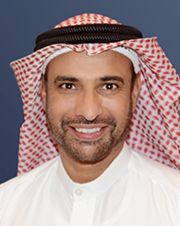Improving reservoir characterization using four innovative seismic technologies
OR
SEG members, view the course for free!
Format: Virtual Webinar. 45 min. presentation followed by 15 min. Q&A
Please note that two sessions will be given at different dates listed below.
Session 1, Monday, November 9, 2020, 8 am to 9 am Dhahran Time
Session 2, Wednesday, December 16, 2020, 9 am to 10 am Dhahran Time
Two live sessions are completed. Please scroll down to watch the videos from the recordings below. SEG members, view the course for free!
Abstract
Identification of subsurface fractures and fault systems is critical for the understanding of hydrocarbon accumulation and flow within a reservoir. Unfortunately, subtle faults and fractures often are invisible in conventional seismic data. The orientation and intensity of faults and fractures often can be inferred effectively using attributes derived from seismic data. This lecture explores four new techniques that may be used to identify subtle reservoir features: (1) disorder, (2) adaptive median filtering based on disorder, (3) edge-guided self-filtering, and (4) octree quantization. I will demonstrate the application of these four new techniques to 3D seismic data volumes to reveal previously hidden geologic information.
Disorder attribute quantitatively describes the degree of randomness embedded in 3D poststack seismic data. This attribute may help hydrocarbon exploration in several ways, including (1) identifying geologic features such as fracture zones, gas chimneys, and terminated unconformities; (2) indicating the signal-to-noise ratio to assess data quality; and (3) providing a confidence index for reservoir simulation and engineering projects.
Disorder also can be used to target noise removal by enhancing the robustness of the median filter, thereby improving the quality of the seismic data and its interpretation. The robustness of the median filter is enhanced by innovatively incorporating noise-level estimation criteria (disorder) in the median filter computation and then adaptively changing the window size of the median filter based on the noise level and the presence of edges. The adaptive median filter reduces random noise in 3D poststack seismic volumes, preserves geologic structure without the need of prior information about the structure orientation, and can be used to improve the quality and resolution of subsequent attribute calculations.
The edge-guided self-filtering technique performs seismic amplitude smoothing guided by edge detection and skeleton attributes to improve resolution of seismic data. Three unique approaches have been adopted: first, forming guiding vectors by including edge detection and skeleton attributes in seismic amplitudes; second, deriving two-dimensional weighting factors by using an anisotropic Gaussian function from structure tensor analysis; and third, iteratively applying a directional weighted median filter to seismic amplitudes, and computing edge detection and skeleton attributes until satisfactory resolution has been achieved. The edge-guided self-filtering enhances edges, such as fractures, channels, and faults.
Octree quantization integrates multiple attributes to meet the interpretational challenges of ever-increasing numbers of seismic attributes in geophysical exploration. It can combine up to eight different attributes into a new single attribute. By combining multiple attributes, it would not only reveal all individual geologic features in the same image but also highlight channels that might not be visible in any single attribute. It can focus on major geobodies through group reduction quantization on combined data.
The aforementioned four innovative techniques for identifying subsurface fractures and faults methods have been used successfully to extract new geologic information from seismic data and to enhance the understanding of geologic features in a reservoir.

Your Instructor

Saleh A. Al-Dossary began his work at Saudi Aramco in the Dhahran Geophysical Research Group, contributing to edge-preserving and smoothing developments. He now works in the Exploration Application Services Department developing new seismic processing and attributes algorithms. Al-Dossary received his B.S. degree in computer science with a minor in geophysics from the New Mexico Institute of Mining and Technology, Socorro, NM. He received his M.S. degree from Stanford University, Palo Alto, CA, and he received his Ph.D. from the University of Houston, Houston, TX, both in geophysics.
Al-Dossary holds seven patents and is an applicant for five additional patents in seismic edge-preserving and detection technology. He is the author and coauthor of several articles published by the Society of Exploration Geophysicists (SEG). He also published two books titled Seismic Data Interpretation Using Digital Image Processing and Attenuation of Incoherent Seismic Noise.
Al-Dossary received the Distinguished Employee Award in Saudi Aramco’s Exploration Application Services Department in 1999, the Outstanding Student Award from the University of Houston in 2003, and Saudi Aramco Excellence Award in 2015.
